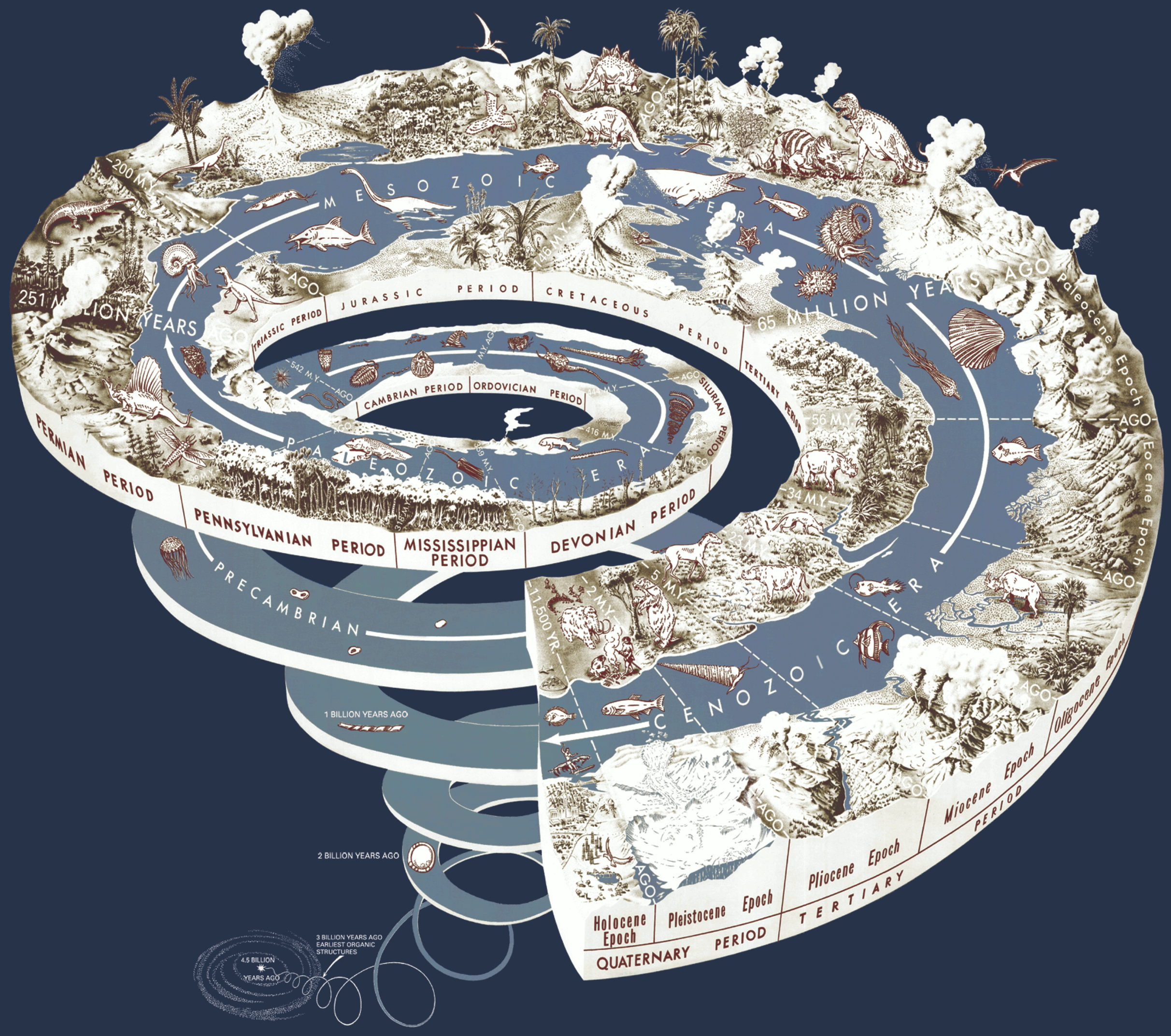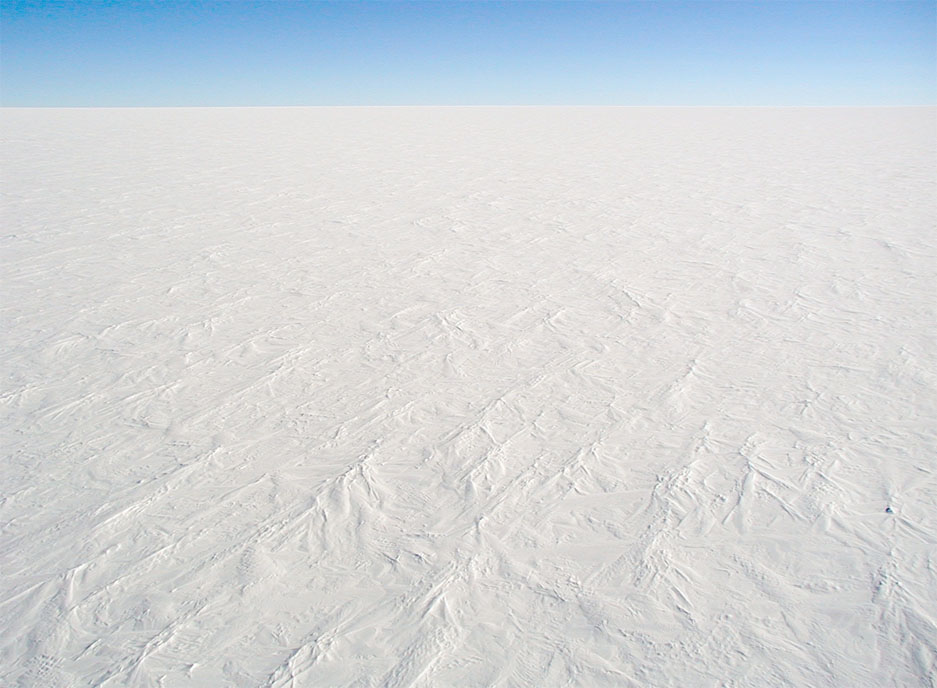
So far in our speculations about the Fermi Paradox, uncertainty in calculating the Drake Equation has led us to a broad range, with N = [0.84-16.03] * f_i * f_c * L. Despite the uncertainty, we concluded that relatively high values of f_i (the fraction of life-bearing worlds that give rise to intelligence), f_c (the fraction of intelligent species that develop technology detectable across interstellar distances), and L (the lifespan of that high-technology phase of that species’ civilization) would lead to scores, if not hundreds or even thousands, of intelligent species producing detectable signals in the Milky Way galaxy right now.
The radio silence we observe from other intelligent life suggests at least one of f_i, f_c, or L is very low. Today we’ll examine part of f_i, from the origins of life to the cusp of intelligence, from self-replication to genus Homo.
Here are some factors tending to lower f_i:
It took roughly 4 billion years to go from the formation of Earth to something we would recognize as an animal or plant. (Assumption: only animals or plants can evolve intelligence). If Earth is normal, then we know from the maximum stellar lifespan data that all O, B, A, and the largest and hottest F type stars cannot live long enough. That knocks out about two-thirds of all stellar systems. So f_i is instantly no greater than 0.33.
Intelligent life requires a lot of energy. (More on this in a future post). Assuming that free oxygen is required for life to generate enough energy, oxygenic photosynthesis has to evolve. (If it doesn’t, all the free oxygen in an atmosphere would rapidly react with carbon, iron, etc. It’s that high reactivity that makes free oxygen so potent in energy generation). If Earth is normal, oxygenic photosynthesis will evolve on any life-bearing planet. The first tranche of free oxygen liberated by photosynthesis will be consumed by metals in a planet’s oceans and surface. (That’s where most of Earth’s commercially relevant iron ore deposits are from). The second tranche of free oxygen will be consumed by gases in the planet’s atmosphere. If Earth is normal, then methane will be one of those gases. Methane would, in effect, burn, yielding carbon dioxide and water.

Methane is a greenhouse gas far more potent than carbon dioxide and water. What happens if most of the methane in a planet’s atmosphere is lost? In Earth’s case, the planet froze over for up to 400 million years. It was only continued volcanic activity, spewing more methane and other greenhouse gases into the atmosphere, that allowed Earth to heat up again enough for the global ice cover to at least partially melt.
Without unglaciated land to colonize, intelligence wouldn’t have appeared on Earth. (Even if dolphins and whales are intelligent, they are mammals adapted to return from land to the sea). So with little or no volcanic activity, a planet after the evolution of oxygenic photosynthesis could freeze over and remain frozen for billions of years, i.e., until its primary star leaves the main sequence. On average, planets smaller than Earth would be more likely to have cold cores and little or no volcanic activity. Let’s say a third of all planets would be too small to have significant volcanic activity, and thus, couldn’t recover from a freeze over. That drops f_i to 0.22.
“Without photosynthesis, no free oxygen; without free oxygen, no intelligence” also means that intelligent life could not evolve in an atmosphere without sunlight, because photosynthesis would never arise. Good-bye, intelligent Europans or Ganymedans, in your ocean encased by 15 miles of ice. If about a third of all planets on which life arises are moons of gas giants, f_i is now 0.15.
It’s easy to assume there is an inevitability to evolution. (I call this assumption “whig natural history.” We’ll talk more about this in the next post). But to get to the cusp of intelligence, life on Earth went through a lot of contingent events. The evolution of photosynthesis. The symbiosis of the first eukaryotic cells. The evolution of sex. The evolution of multicellularity. The formation of the ozone layer, to make land habitable against excessive UV. The emergence of animals. Delay any one of these–at least from photosynthesis to multicellularity–on a planet, and you increase the chances of its primary star running out the main sequence clock.
Why assume any of those could be delayed? Why not? There’s no purpose to evolution: it’s simply the blind pursuit of local optima. In light of that, we’ll lower f_i by another two-thirds, to 0.05.
One last point. Sporadic waves of mass extinction are a good thing, at least as far as we’re concerned, because they cleared the way for the species that gave rise to us. It may be that Jupiter’s size is in a sweet spot to propel the optimal number of large, dinosaur-killing impacts our way. A smaller gas giant would send too many impacts our way, thus interrupting the rise of the successors; one much larger than Jupiter would not send enough. Even if Earth is normal, there are reasons (hot Jupiters, super Jupiters) to conclude Jupiter is not. So f_i ratchets down again, to the arbitary value of 0.02.
We’re now at N, the number of detectable civilizations in the galaxy, at [0.02-0.32] * f_c * L. And that’s assuming intelligence is inevitable when sufficiently complex multicellular life on land has arisen. Is it inevitable? Find out in the next post.